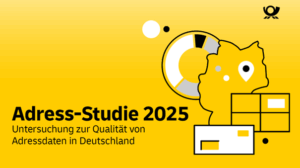What does insolvency have to do with CRM? Quite a lot. After all, high costs for acquiring new customers, a lack of customer loyalty and a few other reasons can quickly lead to a crisis situation – or, in the worst case, insolvency. The recently published insolvency statistics for 2023 have inspired me to provide a few tips – from a CRM perspective. But let’s take a quick step back:
What are the typical reasons for insolvency?
Before we answer the question “What does insolvency have to do with CRM?”, a brief analysis: Insolvencies can have many causes and are often a combination of internal and external factors. Here are some of the most common reasons for insolvency:
Financial management: lack of liquidity and poor cash flow management are common causes. Companies can get into difficulties if they do not have enough cash to cover their current liabilities.
High debt levels: Excessive debt can make companies vulnerable, especially if it is associated with high interest rates or deteriorating credit conditions.
Declining sales: A significant decline in sales, whether due to the loss of key customers, falling demand or increasing competition, can lead to financial difficulties.
Failure to adapt to the market: Companies that fail to adapt to changes in their market environment, whether through technological developments, changes in consumer demand or new regulations, risk their ability to survive.
Errors in corporate strategy: Strategic mistakes such as misguided expansion, bad investments or the introduction of products that miss the market can lead to considerable financial losses.
Operational problems: Problems in production, logistics or administration that lead to inefficiencies and increased costs can also lead to insolvency.
Legal and regulatory problems: Legal disputes or non-compliance with new or existing regulations can lead to significant financial burdens.
and probably a few more.
Here is a link to a LinkedIn article that lists further important study results and findings on “What does insolvency have to do with CRM?”.
What options are there to avoid insolvency?
incl. 7 tips from the strategic and operational CRM portfolio on What does insolvency have to do with CRM?
There are several strategies that companies can use to avoid insolvency and here are a few answers to “What does insolvency have to do with CRM?”:
Better cash flow management: closely monitoring income and expenses and sticking to a strict budget can help avoid cash flow problems.
Tip 1: Set up subscription models and install service contracts to create more or long-term revenue security
Debt management: Rescheduling debt, negotiating better credit terms or consolidating debt can reduce the financial burden.
Tip 2: Identification of additional assets such as customer value analyses and address or data quality show the existing values in the company. These can also convince your bank or investors.
Market adaptation: Adapt quickly to market changes through innovation, diversification or realignment of products and services.
Tip 3: A look at the development of customer groups shows which customer groups are valuable in the long term and which are not. Who buys which products, who uses which services? Optimizations (e.g. better category management or campaigns) can easily be derived from this.
Cost control: Identifying and reducing unnecessary expenditure and increasing operational efficiency can improve profitability.
Tip 4: Customer value analyses identify customers with a low contribution margin. Consider separating them from the “weak” ones.
Tip 5: Campaign controlling, e.g. what do the new customers cost and do they recoup these costs in 12 months? Carry out tests (use less advertising material, what is the effect? write to fewer customers, what is the effect? etc.).
Strategic planning: A forward-looking business strategy that includes market research and risk assessment can help avoid potential pitfalls.
Tip 6: As with “cash flow”, it is important to plan customer development and identify opportunities and risks. This has a direct impact on the budget and avoids misallocations.
Early warning systems: Implementing systems for early detection of financial and operational problems can enable companies to take proactive action before the situation worsens.
Tip 7: In connection with the previous point, planning from a customer group perspective is helpful. Planning by product is outdated. There is also a new planning philosophy: less is more. It is better to adapt more often than an expensive big hit that is outdated after a week.
Professional advice: Seeking legal, financial and management advice can provide valuable insights and solutions for difficult situations.
Tip 8: Of course, an experienced consultant like us can recognize problems early on and help to avoid them. An example: A customer had a very high proportion of discount offers. Thanks to our analysis, he recognized this and changed his strategy.
Conclusion on: What does insolvency have to do with CRM?
Every business is unique and the most effective strategies to avoid insolvency depend on the specific circumstances and challenges it faces. We help you to preserve and build on this uniqueness.












